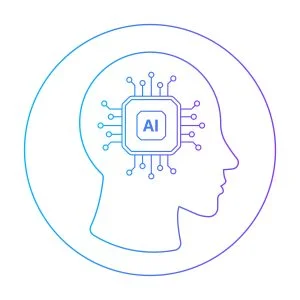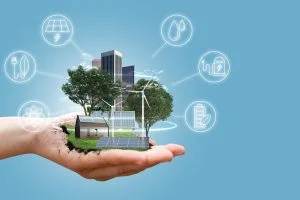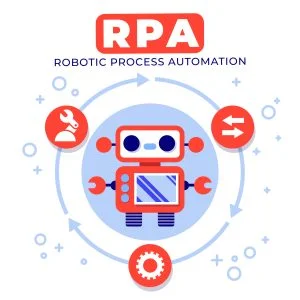10 Hot Technology Trends for 2024
As we stand on the precipice of 2024, the technology trends landscape is poised for unprecedented advancements that will redefine the way businesses operate and innovate. Embracing these trending technologies is not just a choice; it’s a strategic imperative in steering your organization towards unparalleled success.
In the realm of Artificial Intelligence, we anticipate groundbreaking strides, empowering businesses to enhance efficiency and decision-making. The proliferation of 5G technology promises not only accelerated data speeds but an entirely new paradigm for connectivity, unlocking opportunities in realms like the Internet of Things (IoT) and augmented reality.
Edge computing is evolving as a cornerstone for real-time analytics and responsiveness, aligning perfectly with the demands of our dynamic business environment. Quantum computing, on the other hand, is on the cusp of revolutionizing industries, from cybersecurity to drug discovery.
Extended Reality (XR) is transcending boundaries, offering immersive experiences with profound implications for customer engagement, training, and design. Blockchain continues to underpin trust and transparency in an ever-connected world, with decentralized finance (DeFi) reshaping financial landscapes.
Sustainability isn’t just a buzzword; it’s a guiding principle. Technologies facilitating environmental responsibility, from energy-efficient solutions to circular economy practices, will play a pivotal role in shaping corporate responsibility narratives.
Biotechnology and Health Tech are advancing hand in hand, offering personalized healthcare solutions and pushing the boundaries of medical innovation. Automation and Robotics are redefining operational efficiency, from manufacturing floors to logistics and healthcare.
Generative AI stands as the pinnacle of creativity, enabling machines to craft content akin to human ingenuity. This transformative force extends its influence across diverse fields, from the arts to personalized user experiences.
In navigating these technological waves, your leadership is paramount. The decisions made today will shape the trajectory of your organization in the years to come. Join us in embracing these trends, not just as technological shifts but as strategic levers propelling your enterprise towards unprecedented success.
Get ready! We’re about to unveil the top 10 hottest technology trends in demand for 2024. Strap in and let’s dive into the future of tech!
1. Generative AI

Generative AI refers to a class of artificial intelligence models that have the ability to generate new content, such as images, text, or even music, that wasn’t explicitly programmed. Generative AI, at the forefront of technological innovation, has transformed numerous industries by empowering machines to produce content akin to human-created work. Its applications span a diverse spectrum, encompassing text generation, image synthesis, and even music composition. Mastery of generative AI opens up enticing career opportunities in artificial intelligence research, data science, and creative sectors.
Some of the top job fields include
| Fields of Application | Description |
|---|---|
| Art and Creativity | – Creating realistic images and artwork. – Generating music compositions and lyrics. – Designing virtual environments and characters. |
| Content Creation | – Automatically generating written content, articles, or stories. – Designing graphics and visual elements for websites and marketing materials. |
| Simulation and Training | – Simulating realistic scenarios for training purposes (e.g., flight simulators). – Generating synthetic data for training machine learning models. |
| Personalization | – Customizing user experiences based on individual preferences. – Creating personalized recommendations in content streaming and e-commerce platforms. |
| Healthcare | – Assisting in medical image generation for diagnostics. – Generating synthetic data for medical research and training. |
| Language and Conversational AI | – Generating human-like text responses in chatbots. – Creating natural language interfaces for various applications. |
| Deepfakes and Manipulation | – Creating realistic deepfake videos and images. – Manipulating and transforming existing content in creative ways. |
Generative AI spans a diverse range of applications, from fostering creativity in art and content creation to practical uses in simulation, personalization, healthcare, and even raising ethical considerations in terms of deepfake technology and its potential misuse.
2. Edge Computing
Edge computing is a distributed computing paradigm that involves processing data closer to the source of generation rather than relying solely on centralized cloud servers. By reducing latency and improving efficiency, edge computing is particularly valuable for applications that require real-time data processing and low-latency responses.
Once considered an emerging technology trend, cloud computing has now become a ubiquitous force, dominated by industry giants like AWS, Microsoft Azure, and Google Cloud Platform. The widespread adoption of cloud solutions by businesses is still on the rise, but the spotlight is now shifting to a new frontier: Edge computing.
As organizations grapple with ever-growing volumes of data, the limitations of cloud computing in certain scenarios have become apparent. Edge computing emerges as a strategic solution, addressing the challenges of latency inherent in cloud processing by bringing computation closer to where it’s needed. Essentially, edge computing can operate “on the edge,” providing localized processing capabilities. This is particularly advantageous for handling time-sensitive data in remote locations with limited or no connectivity to a central data center, effectively functioning as miniature data centers.
In the evolving landscape of computing technologies, staying abreast of not only cloud computing but also embracing newer paradigms like edge and quantum computing opens up exciting career prospects. Here’s a glimpse into the job opportunities that align with these technologies:
- Cloud Reliability Engineer:
- Insight: In the realm of cloud reliability engineering, professionals ensure the seamless and dependable functioning of cloud-based systems. They play a critical role in maintaining high availability and minimizing disruptions.
- Cloud Infrastructure Engineer:
- Insight: Cloud infrastructure engineers focus on designing, implementing, and managing the underlying infrastructure of cloud environments. They are crucial in optimizing performance and scalability.
- Cloud Architect and Security Architect:
- Insight: Cloud architects design comprehensive cloud strategies, ensuring that systems align with business objectives. Security architects, on the other hand, focus on safeguarding cloud environments, addressing potential vulnerabilities and threats.
- DevOps Cloud Engineer:
- Insight: DevOps cloud engineers bridge the gap between development and operations, utilizing cloud technologies to streamline software development processes. They play a key role in enhancing collaboration and accelerating deployment cycles.
Navigating this dynamic landscape requires professionals not only to have a robust understanding of traditional cloud computing but also to adapt to the transformative potential offered by edge computing and quantum computing. The ability to integrate these technologies into a cohesive strategy positions individuals for roles at the forefront of innovation.
As edge computing gains prominence, professionals who can seamlessly blend cloud and edge technologies will be sought after. Embracing this evolution ensures that your skill set remains not only relevant but also instrumental in shaping the future of computing. Consider these roles as gateways to a career that not only keeps pace with technological advancements but actively contributes to defining them.
3. 5G
Fifth-generation wireless technology, commonly known as 5G, represents the latest evolution in mobile communication standards. It is designed to offer significantly faster data speeds, lower latency, and greater device connectivity compared to its predecessor, 4G LTE. 5G is poised to transform the way we connect, communicate, and consume data, ushering in a new era of connectivity with profound implications across various industries.
Jobs and Careers in 5G:
- 5G Network Engineer:
- Involves designing, implementing, and maintaining 5G networks.
- IoT Solutions Architect:
- Focuses on designing and implementing IoT solutions that leverage 5G connectivity.
- AR/VR Developer:
- Creates immersive experiences by utilizing the high-speed and low-latency capabilities of 5G.
- Smart City Solutions Specialist:
- Works on developing and implementing connected solutions for smart cities, leveraging 5G technology.
- Autonomous Vehicle Engineer:
- Involves designing and implementing communication systems for autonomous vehicles that rely on 5G connectivity.
- Telecommunications Analyst:
- Analyzes and optimizes communication networks, including 5G infrastructure.
As 5G continues to roll out globally, the demand for skilled professionals in these areas is expected to grow, creating exciting opportunities for those who can harness the potential of this transformative technology.
4. Quantum Computing

Quantum computing is a revolutionary paradigm in computing that leverages the principles of quantum mechanics to perform complex computations at speeds unimaginable with classical computers. Unlike classical bits that can exist in one of two states (0 or 1), quantum bits or qubits can exist in multiple states simultaneously, thanks to the phenomena of superposition and entanglement. This allows quantum computers to explore multiple solutions to a problem simultaneously, potentially solving certain problems much faster than classical computers.
Quantum computing stands out as a transformative technology trend, leveraging the principles of quantum mechanics, such as superposition and quantum entanglement. Its profound impact extends beyond traditional computing capabilities, notably contributing to the battle against the spread of the coronavirus and the development of potential vaccines. The unique ability of quantum computing to swiftly query, monitor, analyze, and act on data, irrespective of its source, underscores its unparalleled potential in addressing complex challenges, particularly in the realm of healthcare.
Furthermore, the applications of quantum computing have found resonance in crucial sectors like banking and finance. Here, it plays a pivotal role in managing credit risk, facilitating high-frequency trading, and enhancing fraud detection mechanisms. The financial industry’s adoption of quantum computing reflects its recognition of the technology’s capacity to revolutionize data processing and decision-making.
As major players such as Splunk, Honeywell, Microsoft, AWS, and Google spearhead innovations in quantum computing, the global market is poised for substantial growth. Projections indicate that revenues in the quantum computing market could exceed $2.5 billion by 2029, signifying the increasing investment and confidence in this cutting-edge field.
To embark on a successful journey in the realm of quantum computing, expertise in quantum mechanics, linear algebra, probability, information theory, and machine learning is essential. These interdisciplinary skills form the foundation for navigating the complexities of quantum computing and harnessing its potential to drive innovation across diverse industries.
5. Extended Reality

Extended Reality (XR) is an umbrella term that encompasses a spectrum of immersive technologies, including Virtual Reality (VR), Augmented Reality (AR), and Mixed Reality (MR). XR goes beyond the boundaries of the physical world, merging real and virtual environments to create new and enhanced experiences.
This burgeoning technology trend is currently gaining significant traction, capturing the imagination of diverse audiences eager to escape the constraints of reality. With the creation of immersive environments that lack tangible presence, extended reality has become particularly popular among gamers, medical professionals, and those in the retail and modeling industries.
In the realm of extended reality, gaming emerges as a focal point, offering lucrative career opportunities for individuals driven by a passion for online gaming. Aspiring professionals can explore pathways in game design, animation, or editing programs to carve out successful careers in this dynamic specialization. Simultaneously, consider some of the top job roles in the expansive field of extended reality, spanning AR, VR, and MR:
- Extended Reality Architect:
- Contribute to the design and development of immersive extended reality experiences, shaping the virtual landscapes users engage with.
- Front Lead Engineer:
- Take a leadership role in the forefront of extended reality technology, overseeing the engineering aspects of creating captivating virtual and augmented environments.
- Software Developer:
- Play a pivotal role in coding and programming, contributing to the development of cutting-edge software for extended reality applications.
- AR/VR Support Engineers:
- Provide technical support and troubleshooting expertise for augmented and virtual reality systems, ensuring smooth user experiences.
- Game Designers:
- Shape the interactive worlds of video games, employing creative and technical skills to craft engaging and immersive gaming experiences.
- Pro Gamers:
- Excel in competitive gaming, leveraging skills and expertise to participate in professional gaming tournaments and events.
- Creative Directors:
- Lead and guide the creative vision of extended reality projects, overseeing the artistic direction and user experience design.
6. Blockchain

Blockchain, a revolutionary technology, is fundamentally a decentralized and distributed ledger system that records transactions across a network of computers. This digital ledger is composed of blocks, each containing a list of transactions, and is secured through cryptographic techniques. Unlike traditional centralized systems, blockchain operates on a peer-to-peer network, enhancing transparency, security, and efficiency in various applications.
While blockchain is commonly associated with cryptocurrencies like Bitcoin, its security features make it applicable to a range of industries. In essence, blockchain acts as an immutable ledger where data can only be added, not altered or removed, forming a secure and transparent “chain” of information. The inability to modify past blocks ensures robust security, and its consensus-driven nature prevents any single entity from controlling the data. With blockchain, transactions don’t require a trusted third party for validation, enhancing efficiency and trust.
As industries increasingly integrate blockchain, there’s a rising demand for skilled professionals. A blockchain developer, at a high level, specializes in creating and implementing solutions using blockchain technology. If you’re fascinated by the potential of blockchain and wish to build a career in this dynamic field, now is an opportune time to start.
To enter the realm of blockchain, acquiring hands-on experience in programming languages, OOPS fundamentals, databases, data structures, web app development, and networking is crucial. Mastering blockchain opens doors to diverse fields and industries, offering career pathways such as:
- Risk Analyst:
- Leverage blockchain’s transparency and security features to analyze and manage risks effectively.
- Tech Architect:
- Design and implement robust blockchain architectures, shaping the technological landscape of organizations.
- Crypto Community Manager:
- Engage with the crypto community, fostering relationships and facilitating communication within decentralized networks.
- Front End Engineer:
- Develop user interfaces for blockchain applications, enhancing the user experience in decentralized environments.
7. New Energy Solutions

New Energy Solutions are pivotal in addressing climate change and transitioning to a more sustainable energy paradigm. As technology advances and economies of scale are realized, these solutions are becoming increasingly cost-effective and accessible. Governments, businesses, and individuals play crucial roles in fostering the adoption of new energy technologies to build a cleaner and more resilient energy future.
The global commitment to environmental sustainability has driven significant changes in energy consumption practices. This shift is evident in the increasing prevalence of electric or battery-powered vehicles and homes adopting eco-friendly choices like solar and renewable energy. Notably, there is a heightened awareness of carbon footprints and waste, prompting efforts to minimize and convert them into sustainable energy sources.
This evolution has given rise to a burgeoning technology trend – New Energy Solutions.
| Energy Solution | Description |
|---|---|
| Renewable Energy Sources | – Solar Power: Conversion of sunlight into electricity through photovoltaic cells. – Wind Power: Generation of electricity using the kinetic energy of the wind through wind turbines. |
| Energy Storage Technologies | – Battery Storage: Efficient storage of excess energy using technologies like lithium-ion batteries. – Hydrogen Storage: Storing energy in the form of hydrogen for later conversion back into electricity through fuel cells. |
| Smart Grids and Microgrids | – Smart Grids: Intelligent electricity grids optimizing generation, distribution, and consumption. – Microgrids: Localized energy systems operating independently or in conjunction with the main grid, providing resilience in remote areas. |
| Electric Vehicles (EVs) | Transitioning to vehicles powered by electricity, reducing carbon emissions. Advancements in battery technology enhance EV range and charging capabilities. |
| Energy Efficiency Technologies | – Smart Buildings: Integration of IoT devices to optimize energy consumption in buildings. – Energy-efficient Appliances: Development of appliances consuming less energy. |
| Green Hydrogen Production | Electrolysis-based production of hydrogen from water using renewable energy sources. Green hydrogen serves as a clean fuel for various industries. |
| Carbon Capture and Storage (CCS) | Technologies capturing CO2 emissions from industrial processes and power plants, storing the captured CO2 underground to mitigate climate change. |
| Advanced Nuclear Technologies | Next-generation nuclear technologies, including small modular reactors (SMRs) and advanced fusion reactors, providing safe and sustainable nuclear energy with reduced environmental impact. |
Here are some of the prominent roles in this dynamic and environmentally conscious sector:
- Green Energy Specialist:
- Specializing in various forms of alternative energy such as solar, thermal, and hydro-power. Experts in this role contribute to the development and implementation of sustainable energy solutions.
- Solar Plant Design Engineer:
- Professionals in this role are responsible for designing and planning the layout of solar power plants, optimizing their efficiency and output.
- Climate Strategy Specialist:
- Focused on developing and implementing strategies to mitigate the impact of climate change. This role involves crafting policies and initiatives that align with environmental sustainability goals.
- Renewable Energy Project Manager:
- Overseeing and coordinating projects related to the implementation of renewable energy sources. Project Managers ensure the successful execution of initiatives aimed at reducing carbon footprints.
- Chemical Energy Expert:
- Specialists in chemical energy explore innovative ways to harness and utilize energy through chemical processes, contributing to cleaner and more sustainable energy solutions.
- Biotechnology Specialist in Energy:
- Applying biotechnological principles to develop sustainable energy solutions. This role may involve research and development in bioenergy and other bio-based energy technologies.
- Renewable Energy Technologist:
- Technologists in this field work on the practical implementation of renewable energy systems, ensuring their efficiency, reliability, and adherence to environmental standards.
As the demand for New Energy Solutions continues to grow, these roles play a crucial part in shaping a sustainable and eco-friendly future.
8. Robotic Process Automation (RPA)

Robotic Process Automation (RPA) is a revolutionary technology that automates repetitive and rule-based tasks within business processes, streamlining operations, enhancing efficiency, and reducing human intervention. RPA employs software robots or “bots” to mimic human actions, interacting with digital systems to execute tasks such as data entry, data extraction, and communication.
Much like Artificial Intelligence (AI) and Machine Learning, Robotic Process Automation (RPA) stands as a transformative technology automating various job functions. RPA involves deploying software to handle business processes, ranging from interpreting applications and processing transactions to managing data and responding to emails. Its primary function is to automate repetitive tasks that were traditionally performed by humans.
Despite concerns raised by Forrester Research, estimating that RPA automation may impact the jobs of over 230 million knowledge workers, constituting around 9 percent of the global workforce, it’s essential to recognize that RPA is not just a job disruptor but also a creator. For IT professionals navigating the evolving landscape of technology trends, RPA presents a plethora of career opportunities.
Jobs in Robotic Process Automation (RPA):
- RPA Developer:
- Designs, develops, and deploys RPA solutions. Requires programming skills and a deep understanding of business processes.
- RPA Analyst:
- Analyzes business processes to identify automation opportunities, designs RPA workflows, and collaborates with development teams.
- RPA Architect:
- Designs the overall RPA architecture, ensuring scalability, security, and integration with existing systems.
- RPA Project Manager:
- Manages RPA implementation projects, coordinates teams, and ensures successful deployment within specified timelines and budgets.
- Automation Consultant:
- Provides consultancy services to organizations on implementing RPA, offering insights on process optimization and automation strategy.
9. Genomics

Genomics, synonymous with genetic analysis, is a field of molecular biology that involves the comprehensive study of an organism’s complete set of DNA, encompassing genes and non-coding sequences. It goes beyond the traditional focus on individual genes, aiming to understand the entire genetic makeup and its interplay with various aspects of an organism’s biology.
Envision a groundbreaking technology that delves into the intricacies of your DNA, aiming to enhance your health by deciphering the makeup of genes, understanding DNA mapping, and scrutinizing their structural components. Genomics stands at the forefront of this transformative technology, facilitating a thorough examination of genes and DNA to quantify genetic information. This process aids in identifying potential health issues and diseases, paving the way for proactive health interventions.
Within the specialized realm of Genomics, a diverse array of roles awaits both technical and non-technical professionals. On the technical front, positions revolve around the design, analysis, and diagnostics of genetic information. Conversely, non-technical roles involve engaging in higher-level research and theoretical analysis to contribute to the broader understanding of genomics.
Explore some of the key roles in the dynamic field of Genomics:
- Bioinformatics Analyst:
- Professionals in this role leverage computational techniques to analyze and interpret biological data, unraveling meaningful insights from genomic information.
- Genome Research Analyst:
- Engaged in the investigation of genomes, these analysts contribute to the ongoing exploration of genetic structures and functionalities.
- Full Stack Developer:
- With a focus on both front-end and back-end development, these developers create robust software applications for genomic research, enhancing the efficiency of data analysis.
- Software Engineer:
- Applying software engineering principles to the development of tools and applications used in genomics, these engineers contribute to advancing technological solutions in the field.
- Bioinformatician:
- Combining expertise in biology and information science, bioinformaticians play a crucial role in managing and analyzing biological data, particularly in genomics research.
- Genetics Engineer:
- Involved in the practical application of genetic engineering principles, these professionals contribute to modifying and enhancing genetic traits for various purposes, from medical advancements to agricultural improvements.
In a landscape where technology intersects with biology, Genomics opens up avenues for innovation and discovery.
10. 3D Printing

An influential trend in the realm of innovation and technology revolves around 3D printing, a groundbreaking method employed for crafting prototypes. This technological advancement has left a profound impact, particularly in the biomedical and industrial sectors. The notion of printing tangible objects directly from a printer was once unimaginable, but today, it has become a tangible reality.
3D printing stands out as a transformative innovation with enduring significance. Companies, especially those in the data and healthcare sectors heavily reliant on 3D printing for their products, offer lucrative and globally appealing job opportunities. To excel in this field, a robust understanding of AI, Machine Learning, Modeling, and, of course, 3D printing is essential. Let’s delve into some of the top-notch roles within this specialization, where expertise in these domains is highly valued:
- AI and 3D Printing Specialist:
- Professionals adept in both AI and 3D printing contribute to the development of intelligent systems that enhance the efficiency and precision of the 3D printing process.
- Machine Learning Engineer for 3D Printing Applications:
- Engineers with expertise in machine learning focus on optimizing 3D printing processes through data-driven insights, improving overall reliability and performance.
- 3D Printing Modeler and Designer:
- Individuals skilled in both modeling and 3D printing bring creativity to the forefront, playing a crucial role in designing intricate and innovative prototypes.
- Biomedical 3D Printing Engineer:
- In the healthcare sector, professionals with knowledge in AI, Machine Learning, and 3D printing contribute to the development of customized medical implants, prosthetics, and other biomedical applications.
- Data Analyst for 3D Printing Optimization:
- Data analysts specializing in 3D printing analyze and interpret data to streamline and enhance the printing process, ensuring cost-effectiveness and optimal results.
The convergence of AI, Machine Learning, Modeling, and 3D printing opens up a realm of dynamic career paths. Professionals equipped with a comprehensive skill set in these domains are not only at the forefront of technological innovation but are also well-positioned to address the evolving demands of industries where 3D printing plays a pivotal role.
Wrapping Up
As we finish talking about these new tech trends, I hope this article has given you a good look into the cool things happening in our digital future. From super smart AI to 3D printing that can do all sorts of things, each trend is like a step forward in making new stuff and getting better.
Just remember, the tech world keeps changing, and it’s not just something to watch – it’s an invitation to join in and be a part of it. Whether you’re into the science of Genomics or you think Quantum Computing is amazing, these trends are making new jobs, chances, and cool discoveries.
While you go through this time of quick tech changes, I hope you feel inspired to learn and use the skills and knowledge we talked about. The tech world is always moving, and your journey in it is always changing.
Cheers to a future full of being curious, learning new things, and trying out awesome new ideas!






